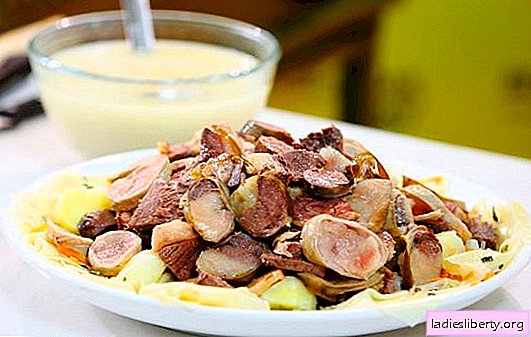
Myositis called diseases of various origins, which are characterized by an inflammatory process and pain in the muscles of the arms, legs, body. These pains are increasing in nature, and are especially felt when moving.
Depending on the occurrence factor, myositis is purulent, infectious, non-purulent, infectious-allergic (polymyositis) and non-infectious (neuromyositis, polyfibromyositis, ossifying myositis). Depending on the nature of the course, myositis is acute, subacute and chronic. Each of these types of myositis can also be localized or common.
Myositis - causes
The most common cause of myositis is careless physical activity, especially if it is not familiar to the patient. We are talking about excessive sports load, active activity in the cold, etc. Myositis can also be a complication after infectious and colds and connective tissue diseases (rheumatism, rheumatoid arthritis, lupus erythematosus, etc.).
This inflammation of the skeletal muscles is characterized by a chronic course with exacerbations that occur when the weather and climate change, or during hypothermia. Also, pain with myositis can appear when palpating the muscles.
Myositis - symptoms
The main symptom of myositis is local muscle pain, aggravated by pressure on the muscles or during movement. This pain causes tension in the affected muscles and limits the mobility of the joints. Sometimes myositis can be manifested by swelling or redness of the skin in a sore spot.
Symptoms of myositis also include increasing muscle weakness, in which the patient begins to perform simple and familiar actions.
Progressing, myositis involves new muscles in the inflammatory process. This can be especially dangerous with cervical myositis, when inflammation can reach the muscles of the larynx, pharynx, esophagus, making swallowing difficult and causing coughing and shortness of breath.
Myositis - diagnosis
The diagnosis of myositis is based on the clinical picture; characteristic changes in the blood that are found in laboratory tests; electromyography data.
Myositis - treatment and prevention
Myositis is an inflammatory disease, so the goal of its treatment is primarily to eliminate the inflammatory process. If the cause of myositis is purulent disease or tuberculosis, then antibiotics are used. If it has arisen due to autoimmune ailments, corticosteroid drugs are used in large doses. Also, if necessary, antiparasitic drugs and special serums can be prescribed.
Mandatory is symptomatic therapy, which consists in the appointment of vascular drugs and painkillers.
An important role in the treatment is given to patient care, therapeutic exercises, proper nutrition of the patient, which consists in a diet with a sufficient amount of easily digestible proteins.
With myositis, dry heat is effective (you can tie a sore spot with a woolen scarf). It is also possible to supplement the treatment with physiotherapeutic procedures.
However, the most effective treatment for myositis is with massage of the affected muscle. Although only a professional massage therapist can penetrate deep into a dense muscle, at home you can do stroking and rubbing muscles using diluted water and heated essential oil of eucalyptus, lavender or marjoram.
The main methods for the prevention of myositis are rational nutrition, moderate motor activity, prevention of physical overload and injuries.











